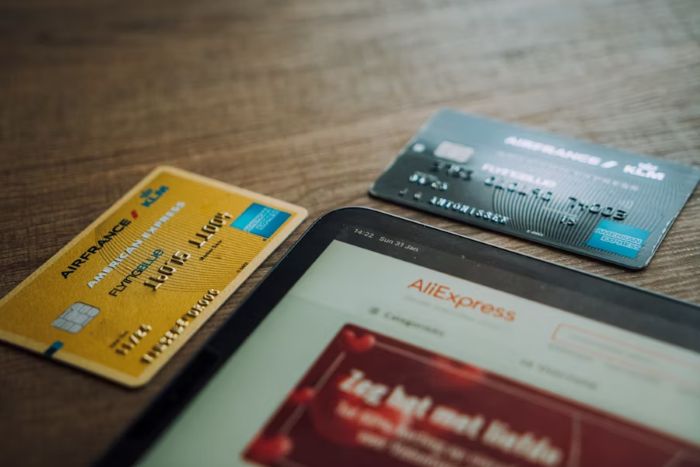The way people borrow money has changed more in the last two decades than in the previous two centuries. Walk into any coffee shop today, and you’ll find someone getting approved for an alternative lending loan on their smartphone while waiting for their latte. That’s a far cry from the days when securing credit meant scheduling bank appointments weeks in advance and drowning in paperwork.
Alternative lending isn’t new. What’s new is how technology has completely reshaped it. From peer-to-peer platforms to cryptocurrency-backed loans, the lending landscape now offers options that would’ve seemed like science fiction just a generation ago. Yet interestingly, some traditional models continue thriving alongside these innovations, proving that old and new can coexist when both serve genuine needs.
Table of contents
The Traditional Foundations of Alternative Lending
Time-Tested Models That Still Work
Before we talk about disruption, let’s acknowledge what’s been working for centuries. Collateral-based lending has roots stretching back thousands of years. People needed quick cash, they had valuable items, and intermediaries facilitated the exchange. Simple, straightforward, effective.
This model persisted because it solved real problems. Not everyone qualifies for bank loans. Sometimes you need money immediately. Other times, you don’t want to permanently part with valuable possessions. Traditional pawnbroking addressed all these scenarios.
Even today, physical lending establishments maintain relevance in major cities worldwide. In London, for instance, established operations like the Best Pawn Shops in London continue serving customers who value immediate cash against luxury assets like watches, jewelry, and fine art. These businesses haven’t disappeared—they’ve adapted, often incorporating technology while maintaining the personal touch that builds trust.

The Trust Factor in Physical Lending
There’s something irreplaceable about face-to-face transactions when significant value is involved. Handing over a family heirloom or expensive watch requires trust. You want to see who’s evaluating your items, ask questions directly, and receive immediate answers.
Physical locations also provide expertise that algorithms can’t fully replicate. Experienced appraisers can spot subtle differences in gemstone quality, identify rare watch complications, or authenticate vintage items through years of accumulated knowledge. That human element remains valuable even as technology advances.
When Technology Started Changing Everything
The Internet Revolution
Everything shifted when the internet made it possible to connect borrowers and lenders directly. Platforms like Prosper and Lending Club emerged in the mid-2000s, introducing peer-to-peer lending to mainstream audiences. Suddenly, you could fund someone’s small business in another state or borrow for debt consolidation without visiting a bank.
This democratization of lending opened doors for people who didn’t fit traditional banking criteria. The underbanked and unbanked populations finally had options. Meanwhile, investors discovered new ways to earn returns beyond conventional savings accounts.
Geographic barriers crumbled. A borrower in rural America could access capital from lenders in urban centers. A student in one country could secure funding from investors in another. The internet didn’t just change lending—it globalized it.
Mobile Banking as a Game Changer
If the internet was revolutionary, smartphones were transformative. Banking apps put entire financial institutions in people’s pockets. Suddenly, checking your credit score, comparing loan offers, and receiving funds could happen during your lunch break.
Mobile-first lenders capitalized on this shift. Companies built entire business models around smartphone interfaces, eliminating physical branches entirely. Application processes that once took days now completed in minutes. The friction between needing money and receiving it virtually disappeared.
This convenience especially resonated with younger generations who grew up with smartphones. For them, downloading an app and getting approved for a loan feels as natural as ordering food delivery. The expectation became instant service, and traditional institutions scrambling to adapt found themselves competing with nimble fintech startups.

Modern Technology Powering Alternative Lending
Artificial Intelligence and Machine Learning
Here’s where things get really interesting. Traditional credit scoring relied heavily on credit history, employment records, and debt-to-income ratios. Useful metrics, sure, but they told an incomplete story.
AI changed the game by analyzing thousands of data points traditional models ignored. How do you use your smartphone? What patterns emerge from your utility payments? Do you read loan terms thoroughly or skip through? Machine learning algorithms process this information, building more nuanced risk profiles.
This technology enables lenders to serve populations that traditional metrics overlooked. Someone with thin credit history but strong cash flow patterns might qualify for favorable terms. A freelancer with irregular income but consistent client relationships could demonstrate creditworthiness in ways conventional scoring missed.
Fraud detection improved dramatically too. AI systems recognize suspicious patterns humans might miss, protecting both lenders and legitimate borrowers from fraudulent activity.
Blockchain and Decentralized Finance
Cryptocurrency introduced entirely new lending paradigms. Decentralized finance platforms eliminate intermediaries completely, using smart contracts to automate lending processes. You can borrow against your cryptocurrency holdings without credit checks, background verification, or bank approvals.
These blockchain-based systems offer transparency traditional finance can’t match. Every transaction lives on public ledgers. Smart contracts execute automatically when conditions are met, removing human error and bias from the equation.
While regulatory uncertainty remains, DeFi platforms continue evolving. They’re not replacing traditional lending yet, but they’re carving out a legitimate niche for crypto-native users and early adopters comfortable with emerging technology.
Changing Consumer Expectations
Speed and Convenience
Today’s borrowers expect instant gratification. They’ve experienced one-click shopping, same-day delivery, and instant streaming. Why should lending be different?
This expectation pressures lenders to streamline operations. Manual underwriting processes give way to automated decisioning. Paperwork becomes digital signatures. Funding that took weeks now happens in hours or days.
The COVID pandemic accelerated these trends dramatically. When physical branches closed, digital-first lenders thrived while traditional institutions rushed to build comparable online experiences. That shift isn’t reversing—consumers discovered they prefer digital convenience.
Personalization and Flexibility
One-size-fits-all lending is dying. Modern borrowers expect products tailored to their specific situations. Need a small loan for three months? There’s a product for that. Want to consolidate debt with flexible prepayment options? Multiple platforms offer exactly that.
Niche lenders emerged serving specific markets. Student loan refinancing. Medical procedure financing. Renewable energy installation loans. Whatever the need, specialized lenders appeared to fill it.
This specialization benefits borrowers through better rates and terms. It’s harder to hide unfavorable conditions when competitors offer transparent alternatives one click away. Market competition drove improvements across the board.
What Comes Next
The future likely involves hybrid models combining traditional strengths with technological advantages. Physical presence paired with digital convenience. Human expertise enhanced by AI insights. Blockchain transparency integrated with regulatory compliance.
Regulation will continue shaping this evolution. Governments worldwide are establishing frameworks for cryptocurrency lending, digital banking, and peer-to-peer platforms. These regulations will determine which innovations thrive and which struggle.
Sustainability and ethical lending are gaining importance too. Consumers increasingly consider social impact when choosing financial products. Lenders responding to these values may find competitive advantages as younger generations prioritize purpose alongside profit.
Conclusion
Alternative lending has traveled a remarkable journey from ancient collateral-based systems to artificial intelligence-driven platforms. Yet what’s most striking isn’t how much has changed—it’s how traditional and modern models now coexist, each serving different needs.
Technology didn’t kill traditional lending. It expanded the ecosystem, creating room for countless approaches. Someone might use a mobile app for a small personal loan while choosing a physical establishment when pawning valuable jewelry. Both options serve purposes, and both will likely persist.
The digital age didn’t eliminate alternatives—it multiplied them. And that’s ultimately what borrowers needed most: choice, transparency, and access to credit on terms that actually work for their lives.
Frequently Asked Questions
What makes alternative lending different from traditional bank loans?
Alternative lending typically involves non-bank institutions, faster approval processes, and more flexible eligibility criteria. While banks rely heavily on credit scores and employment history, alternative lenders often consider broader data points and serve borrowers who might not qualify for conventional loans.
Is alternative lending safe?
Safety depends on choosing reputable, regulated lenders. Research platforms thoroughly, verify their licensing, and read reviews from other borrowers. Legitimate alternative lenders follow regulatory requirements and provide transparent terms. Avoid lenders making unrealistic promises or charging excessive fees.
How has technology improved the lending experience?
Technology enables faster approvals, often within hours instead of weeks. It allows better risk assessment through AI analysis of multiple data points. Mobile apps provide convenient access anytime, anywhere. Automation reduces costs, potentially resulting in better rates for borrowers.
Can traditional and digital lending models work together?
Absolutely. Many established institutions now incorporate technology while maintaining physical locations for customers who prefer face-to-face service. Hybrid models offer the best of both worlds—digital convenience with human expertise when needed for complex transactions or valuable assets.











